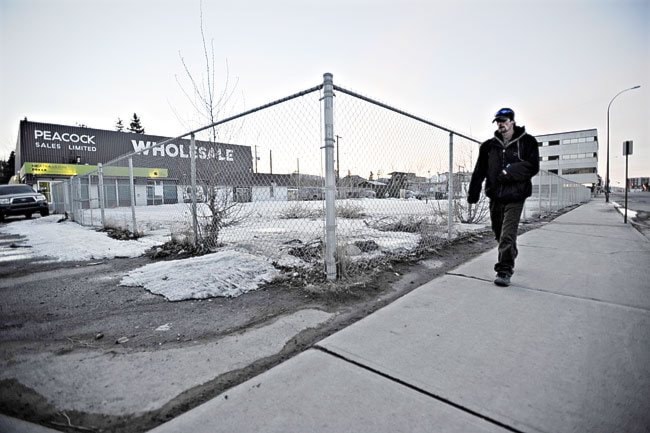First dear reader, I must apologize. This article, unfortunately, has nothing do with cool treats and everything to do with the issue of abandoned and vacant properties in the city.
The City of Whitehorse has an issue with vacant land and derelict buildings downtown. Walking down Second Avenue from Robert Service Way one passes, in order, a shuttered mechanic’s garage that is home to numerous vehicles and oil drums, a large empty lot that used to be an Esso gas station and a vacant building which used to be the Dairy Queen (which is sorely missed).
This walk will take you five minutes, and these buildings and lots have been this way for years. And this is just one small portion of one street.
Council should put the issue of abandoned and vacant lots on its radar and investigate the tools available to encourage development.
There are at least two options available to the city to deal with vacant/low-use buildings and property. The first is a vacant-building bylaw applying standards and penalties to abandoned buildings. The second option is a restructuring of the property tax system to encourage development of vacant or low-use properties.
The first option was pioneered in Canada by the City of Winnipeg, which enacted its Vacant Buildings By-Law in 2010. The bylaw sets minimum standards of maintenance for abandoned buildings and applies a yearly penalty to owners of such property. The penalties are designed to encourage individuals to develop or sell the property. Toronto and Hamilton have since followed suit and adopted similar bylaws.
I am not especially inclined to this option as it requires the creation of an entire enforcement mechanism and opens up disputes as to whether a building is abandoned or not. Further, it doesn’t deal with the issue of vacant or low-use properties, such as the vacant Esso property.
So I think we would be better off pursuing the second option, the restructuring of our commercial property tax system to encourage desired development. I would like to see the city move to a system where we ignore the buildings when assessing property and instead tax just the land.
The underlying idea is to tax the land’s potential rather than the actual development. Such a land value tax was conceived by Henry George in 1879 and is intended to encourage the development of lots to their full potential.
For illustrative purposes let’s take two side-by-side lots: the office building on the corner of Lambert and Second and the abandoned Dairy Queen building.
Using the current assessment system, which takes the value of the land and replacement cost of the building into account, the office building lot is assessed at $3.5 million, meaning it pays $60,000 in property taxes in a year. The Dairy Queen building, meanwhile, is assessed at $790,000, meaning it pays only $13,000.
Both buildings are side by side in the commercial core of the city and the lots are the exact same size, yet one lot pays one-fifth of the property tax of the other. While the Dairy Queen owner has some incentive to develop or sell, that inducement would be much stronger if faced with a similar bill as its neighbour.
Further, the current system of assessing the replacement cost of a building has actually seen the tax bill of the Dairy Queen lot decrease along with the condition of the building. Since 2009 the Dairy Queen building has depreciated in assessed value by $40,000, while the office building next door has increased by $400,000. Under the current system, letting your building run down results in a lower property tax bill which, again, doesn’t exactly force an owner to think about maintaining or developing derelict or abandoned buildings.
If the Dairy Queen lot instead came with a tax bill commensurate with its location rather than with the derelict building, the increased tax bill would force the owner to think about either developing the property or selling to somebody who would.
A land value tax would also encourage development on the vacant Esso lot, a lot to which a vacant building bylaw would, for obvious reasons, not apply. The Esso lot is assessed at $560,000, meaning it currently pays $9,000 in property tax in a year.
I note that the Esso lot is the size of both the office building and the Dairy Queen building combined, and is literally a stone’s throw from those buildings. The office building and Dairy Queen pay a combined $73,000 in property tax for the same footprint as the $9,000 Esso lot.
Under a land value tax system, the Esso lot would be subject to a tax commensurate with its neighbouring lots to encourage development or sale. Meanwhile, the office building rate would come down and the Dairy Queen and Esso rates would rise. The same property tax would be paid to the city, just by different players.
It is time that council investigate giving itself the tools to encourage the owners of derelict and vacant properties to either develop or sell. Second Avenue will look better for it.
Graham Lang is a Whitehorse lawyer and long-time Yukoner.
